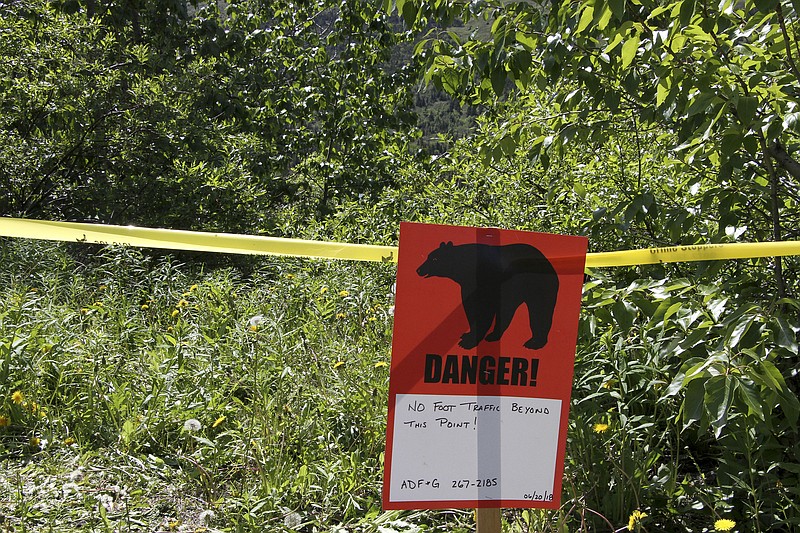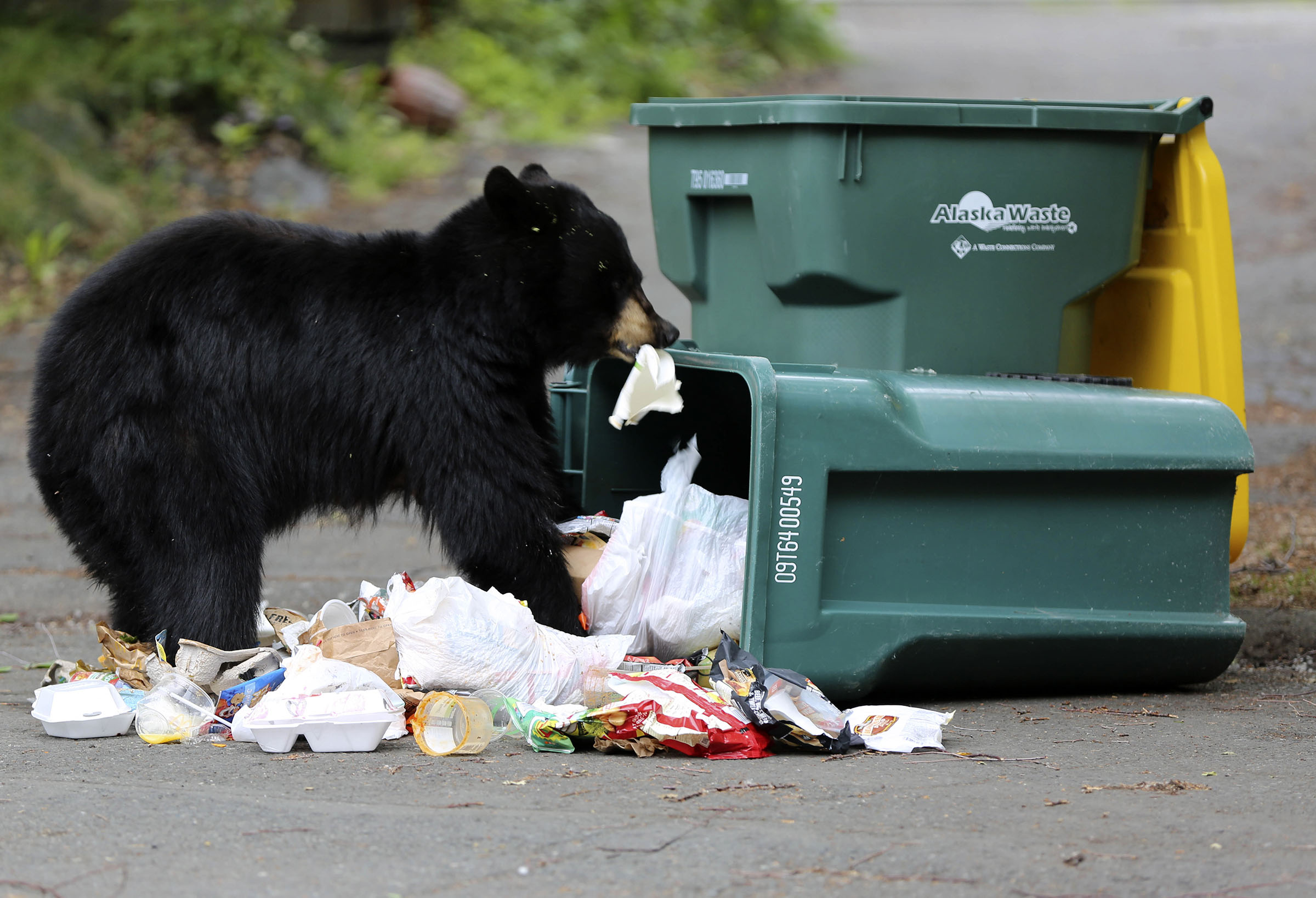More than once in this space, I have reminded you that everything is not always sunshine and rainbows in the outdoors world.
Hunters and fishermen have their own topics that may be controversial and not everyone agrees on — everything from wildlife diseases such as chronic wasting disease to the origin of our coyote population to how many mountain lions you have in your area — and these can keep the discussion lively at the barber shop, water cooler and gun store counter. Still, nothing seems to fascinate those of us in the homo sapiens camp as much as large predators, as in those big enough to be a danger and even occasionally eat one of us.
Mountain lions and great white sharks aside, the members of the Ursus camp, the bears, are often in the news. Now just to set the stage for this little sermon, I will try to address some of the issues in the bear attack world and at the same time talk about what I see as a bigger topic on something we seem to be very divided about.
Bear attacks on people seem to be on the increase in recent years.
On one hand, I might say that it could be there is better reporting of such incidents, but I think it is probably because there are just more bears out there than we had 50 years ago. We have more bears? Yes, east of the Big Muddy, black bears have certainly increased in numbers, and they also have expanded their range.
Where I reside in the hills of West Virginia, we always had bears in the remote highlands; now we have bears all over the state, probably in every county. Like wild turkeys, we found out bears do not require wilderness areas to thrive. This is true for much of the eastern United States as we now find black bears in states where you never thought you would see one.
Just watch the video feeds on your phone and on the TV news for frequent stories about a bear going into a convenient store (doing a little late night shopping) or showing up in a dumpster in the middle of town. Earlier this month, the Times Free Press reported on a black bear sighting on Signal Mountain. Bears looking for food and territory will sometimes lead to unexpected encounters with humans.
In the western U.S., the grizzly bear has certainly expanded his range.
While once they might have been concentrated around the area of Yellowstone National Park and what is known as the Greater Yellowstone Ecosystem — which covers more than 2 million acres in the northwest corner of Wyoming and over into eastern Idaho and southern Montana — residents in this area routinely report they are seeing more grizzlies than in the past.
The tricky part here in talking about it is that the numbers may vary from the sources you go to. Alaska's News Source (KTUU-TV in Anchorage), using data "from a variety of news organizations and archives," reported in early July of 2017 that there had been 48 fatal bear attacks in North America from the year 2000 to that point.
(On a side note, it is interesting to me that 25 of these attacks were attributed to black bears, while 21 were from brown bears — the grizzly and the larger coastal brown bear; some say it is the same bear and that the big bear is just a larger version of the inland grizzly bear.)
Not all attacks are the same.
You may remember I took a trip to Alaska a few years ago to attend a bear defense class put on by a couple of friends I met up there in that wonderful state. Sam Naramore and Steve Nelson teach a firearms-based bear defense class to members of the Alaska Department of Natural Resources, the Bureau of Land Management, the U.S. Geological Survey and other groups that spend a lot of time in the boonies. I learned a lot that week, and one thing that really stuck with me was how black bears in Alaska are usually involved in predatory attacks.
Bear experts tell us there are basically two types of attacks.
One is defensive, in that the bear is defending something. It could be food, as in you blundered onto a fresh kill, it might be a mother bear with cubs seeking to protect them, or you bumped into a bear in his area and he just doesn't like you being there (those last two are usually brown bears).
The other category of attack is the predatory mode, and the bear will act very differently for this attack. The predatory bear may follow you for some time, hiding, quietly following you and acting secretive. This bear is stalking you as prey and may end up charging you in an attempt to have you for dinner.
Of all I learned in Alaska, the fact that black bears do more predatory attacks than brown bears is amazing to me. Why is that? Why do black bears attack humans for food more than brown bears?
While predatory attacks by black bears in Alaska are certainly not unheard of, you don't hear much about it down here in the lower 48 states. Recently, though, a bear attack in Arizona got a lot of attention in the news. A man was reportedly drinking coffee on his property where he was building a home, and a black bear attacked and killed him and evidently had started to feed on the body when it was shot and killed by a neighbor.
I have found a few other instances of bears killing humans for food in the lower 48, but not many. Why is that?
Now to the issue that usually confounds me on the reporting of bear attacks.
The modern mindset on predators is different for many.
Usually without fail, the news source and the agency on the scene will downplay the danger associated with a bear attack and will always talk about how "rare" such an incident is. One source related that there were 664 brown bear attacks from 2000 to 2007. Is almost 40 attacks a year rare? I don't know, you tell me.
It always seems to me the person reporting the incident is trying to downplay the issue and say something such as, "You are much more likely to get struck by lightning than get killed by a bear." Besides all this, when they go on to tell you how to protect yourself from an attack, there may be some discussion about bear pepper spray, but there's almost never a word about firearms.
My brothers and sisters in camo, you may think I am making mountains out of mole hills here, but what I usually see is a growing number of people in society who think more of an animal's life than a human's life. These people don't want the animal hurt under any circumstances, and if you have an encounter with a bear and you are hurt or killed, their thoughts are that you just shouldn't have been there and you were encroaching on the bear's home.
As you may have guessed, I don't really agree with that. The best way you can protect yourself, your family and your friends from large predators is with a large gun.
"Guns & Cornbread" is written by Larry Case, who lives in Fayette County, W.Va. You can write to him at larryocase3@gmail.com.

